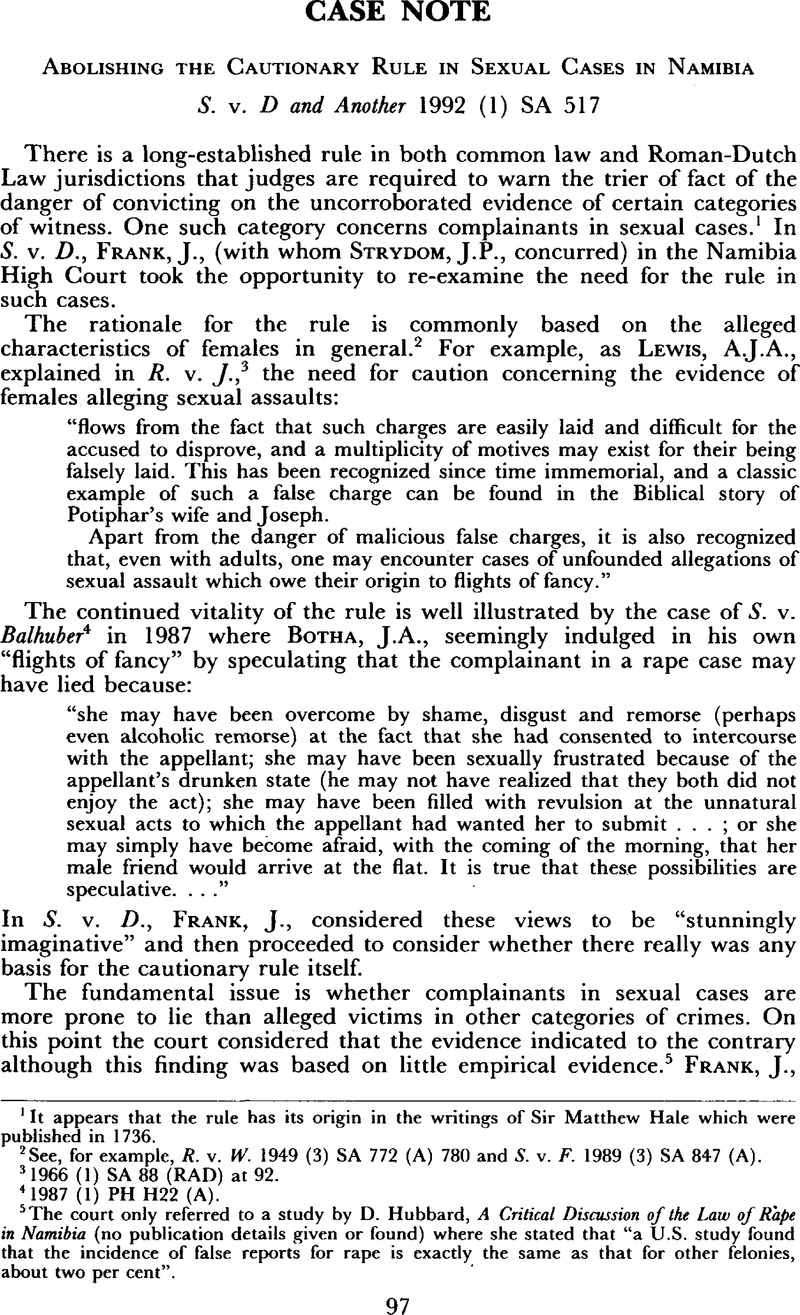Article contents
Abolishing the Cautionary Rule in Sexual Cases in Namibia
Published online by Cambridge University Press: 28 July 2009
Abstract

- Type
- Case Note
- Information
- Copyright
- Copyright © School of Oriental and African Studies 1993
References
1 It appears that the rule has its origin in the writings of Sir Matthew Hale which were published in 1736.
2 See, for example, R. v. W. 1949 (3) SA 772 (A) 780 and S. v. F. 1989 (3) SA 847 (A).
3 1966(1) SA 88 (RAD) at 92.
4 1987 (1) PH H22 (A).
5 The court only referred to a study by D. Hubbard, A Critical Discussion of the Law of Rape in Namibia (no publication details given or found) where she stated that “a U.S. study found that the incidence of false reports for rape is exactly the same as that for other felonies, about two per cent”.
6 Its continued influence is illustrated by the fact that a modern text on the law of evidence in South Africa cites “Potiphar v. Joseph” as an “authority” for the retention of the rule: see Hoffmann and Zeffertt, South African Law of Evidence 4th ed., 1988, at 580.
7 At 517.
8 South African Law Commission, Report on Women and Sexual Offences in South Africa 1985, para. 3.70.
9 Law Commission Working Paper 115, 57–58. The Commission has now recommended the abolition of the cautionary rule entirely: see Law Commission Report, Corroboration of Evidence in Criminal Trials. In New Zealand the rule was abolished by the Evidence Amendment Act (No. 2) 1985.
10 14Cal 3d 864.
11 Especially a Note “The Rape Corroboration Requirement: Repeal Not Reform” in 81 Yale L.J. 1365.
12 Wright, C.J., at 883.
13 In the court of first instance.
14 S. v. C. 1965 (3) SA 105 (N).
15 Civil Appeal No 4/91, (unreported).
16 See the judgment of Amissah, J.P., at p. 19.
- 1
- Cited by




